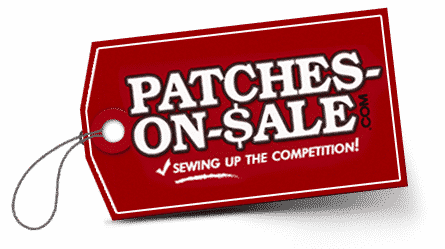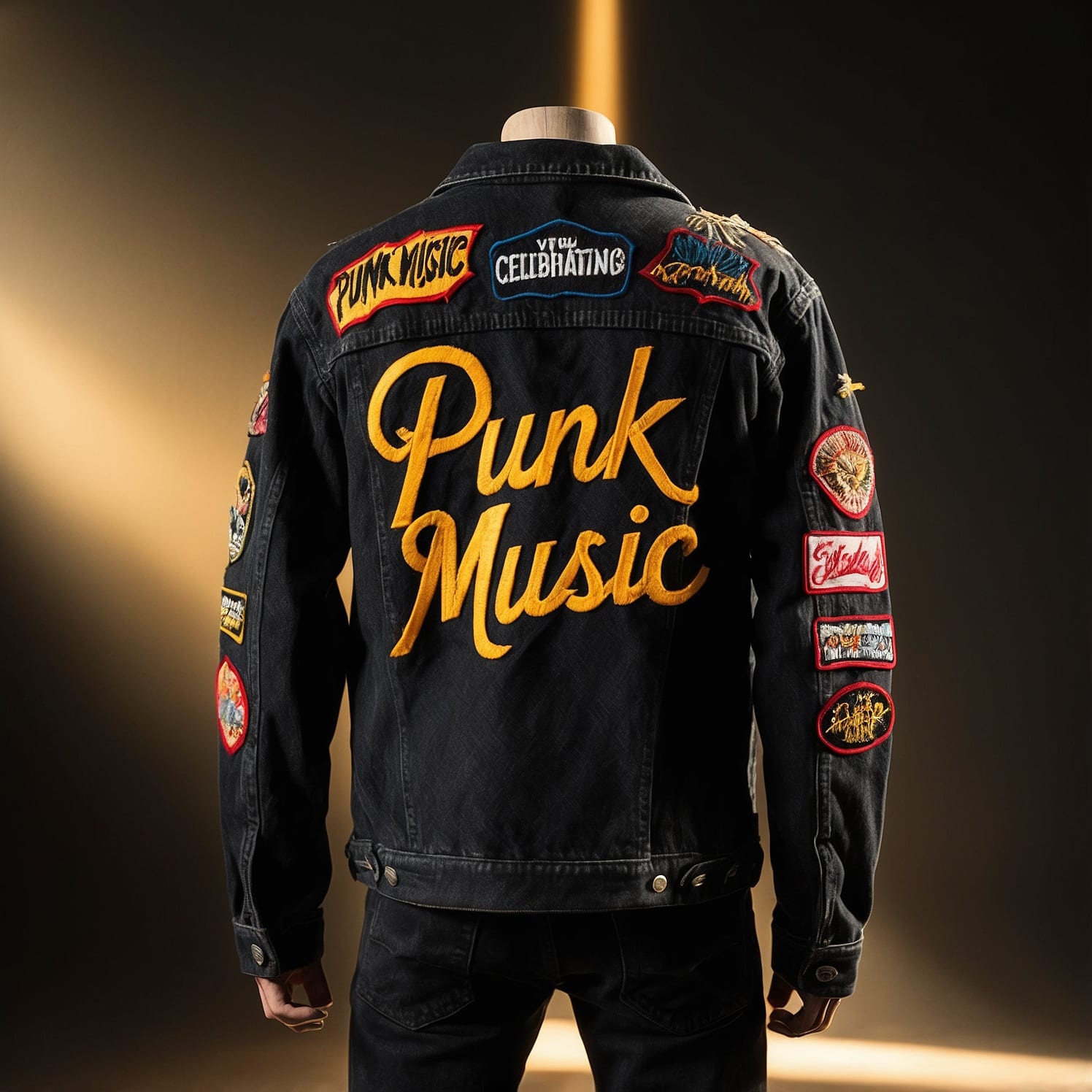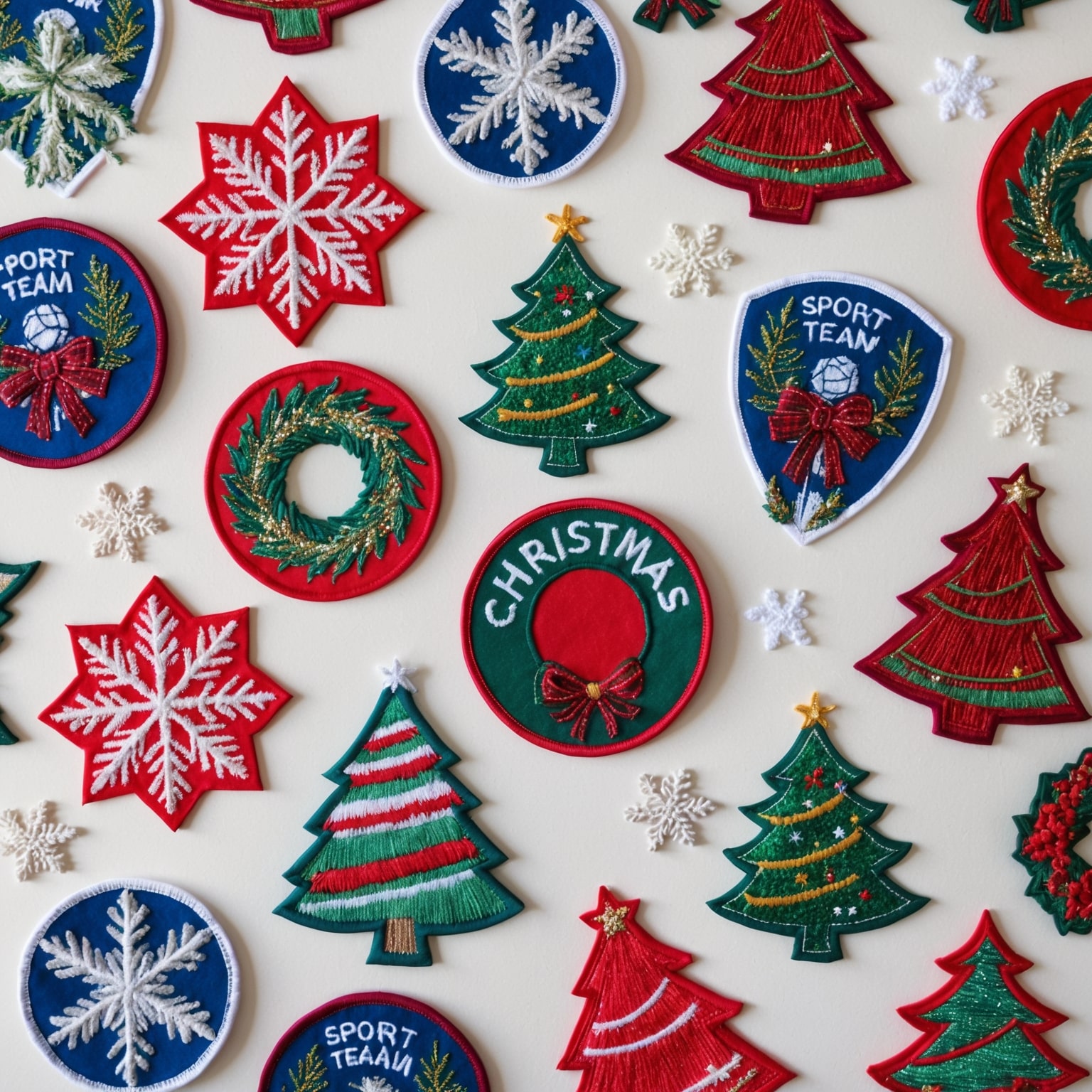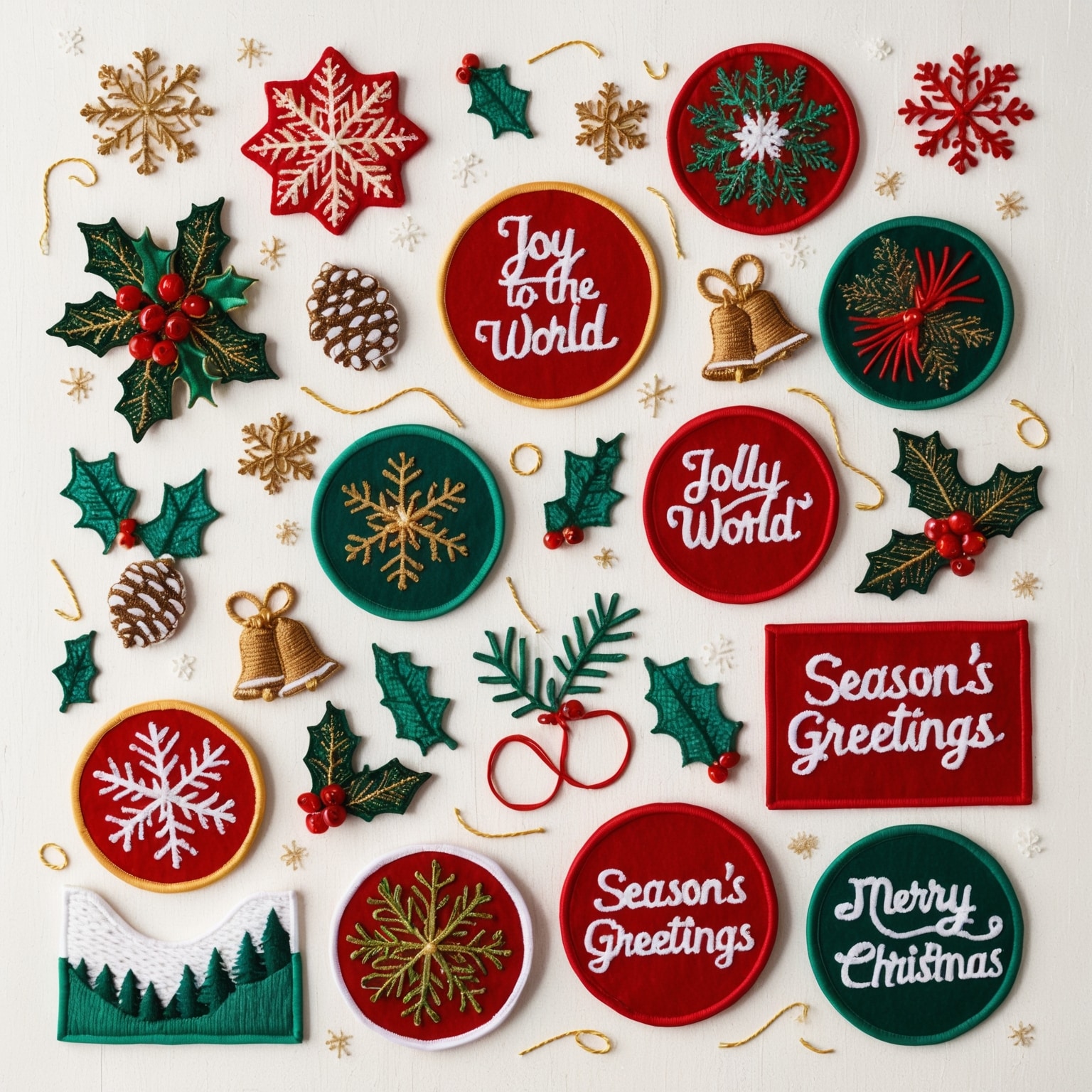Music and fashion have always shared a symbiotic relationship, where the visual aesthetic of a movement or a band often communicates as much as the music itself. Over the decades, one of the most iconic elements tying these two together has been the use of custom patches. A simple yet powerful piece of fabric, a patch can signify rebellion, allegiance, or simply an artistic statement. These wearable symbols have stitched together subcultures, helped build musical legacies, and continue to evolve with modern pop culture.
From their rebellious roots in punk rock to their polished place in modern-day pop, custom patches have transcended mere decoration, evolving into symbols of identity and belonging. These patches—sewn onto jackets, bags, hats, and more—allow fans and musicians to visually communicate their affiliation with certain movements, bands, or ideologies. What began as a DIY statement within the underground punk scene has become a staple of both niche subcultures and mainstream fashion.
In this article, we’ll explore the journey of custom patches through various music scenes, starting with their punk origins and following their evolution into the modern pop landscape. From rebellion to pop star chic, custom patches have become more than just fashion—they are statements of individuality and unity across generations.
The Punk Rock Beginnings: DIY Rebellion and Identity
The rise of punk rock in the mid-1970s was not just a musical revolution but also a cultural one. This movement, characterized by loud, fast, and unapologetic music, quickly became a way for disenfranchised youth to express their anger and dissatisfaction with societal norms. Punk wasn’t just about the music—it was a lifestyle, a political statement, and a fashion movement. And custom patches were one of the clearest ways to broadcast these values.
1. The Birth of DIY Culture
Punk rock’s ethos revolved around “Do It Yourself” (DIY) culture. Punk bands lacked the resources or desire to work with big record labels, choosing instead to self-produce and distribute their music. This DIY approach extended to fashion. Rather than following mainstream trends, punks created their own looks by modifying and customizing their clothing. Ripped jeans, safety pins, and custom patches became synonymous with the punk aesthetic.
In the early days of punk, custom patches were often handmade, stitched onto jackets and vests as a personal expression of the wearer’s affiliations. These patches frequently displayed the names or logos of influential punk bands like The Sex Pistols, The Ramones, and The Clash. Fans created these patches to show their loyalty to the movement, using them as badges of identity, rebellion, and protest.
The unpolished and raw look of the patches mirrored the punk music itself—aggressive, loud, and unapologetic. Each patch told a story. They weren’t mass-produced accessories but personalized pieces of art. Whether made at home with markers and needlework or bought from independent vendors, patches became an integral part of punk’s visual language.
- Tip: When designing custom patches that channel the punk spirit, embrace imperfect designs, bold fonts, and rebellious imagery. Consider the handmade, gritty aesthetic that defined the early days of punk rock.
2. Band Logos and Political Statements
Patches in the punk scene weren’t limited to band logos. They were also used to convey political ideologies, personal philosophies, and anti-establishment messages. The punk movement was deeply connected to socio-political issues, and its fashion was a reflection of that. Patches with anarchist symbols, anti-authoritarian slogans, and calls for rebellion became popular, emphasizing the movement’s defiance of mainstream culture.
For many punks, their jackets and vests became canvases for self-expression. The more patches they had, the more they communicated their personal values, musical tastes, and political beliefs. Punks didn’t just wear patches to show their love for a band—they wore them to shout their discontent with the world around them. The visual aesthetic of punk was inseparable from the music itself, and custom patches became a key medium for spreading that message.
Post-Punk and the New Wave: A More Refined Rebellion
As the 1970s drew to a close, punk rock began to morph into new subgenres, including post-punk and new wave. While punk had been raw and chaotic, post-punk introduced more experimental and refined sounds, blending punk’s energy with more introspective and artful approaches. This shift in music was also reflected in the use of custom patches, which continued to be popular but took on a more polished and nuanced aesthetic.
1. Post-Punk’s Dark and Minimal Aesthetic
Bands like Joy Division, Siouxsie and the Banshees, and The Cure helped shape the post-punk movement with music that was moodier, darker, and more atmospheric than the brash sounds of punk rock. In terms of fashion, this shift meant a move toward a more minimalist and polished aesthetic. Gone were the torn clothing and jagged, hand-drawn logos; in their place were cleaner lines, darker colors, and abstract symbolism.
Custom patches in the post-punk era still carried the rebellious undertones of punk but were often more subdued in their presentation. Fans of post-punk embraced a gothic aesthetic, often wearing black clothing adorned with patches featuring minimalist designs—symbols like skulls, crosses, or abstract shapes. The focus was on creating a more sophisticated and intellectual version of rebellion, with fashion serving as a reflection of the music’s introspective nature.
2. The New Wave Twist on Patches
At the same time, new wave bands like Blondie, Devo, and Talking Heads brought a quirky, avant-garde edge to the punk spirit. Their fashion sense was eclectic and colorful, and custom patches became an extension of their offbeat aesthetic. These patches featured bold graphics, neon colors, and futuristic designs that reflected new wave’s playful and experimental approach to music and fashion.
While punk rock patches were gritty and rebellious, new wave patches were more about self-expression and experimentation. Fans of new wave bands wore patches that embraced abstract art, geometric shapes, and even sci-fi-inspired designs. This playful and avant-garde approach helped move patches from the underground punk scene into more mainstream music culture.
- Tip: When designing custom patches inspired by post-punk or new wave, use bold colors, geometric designs, and minimalistic symbols. Incorporate elements that reflect the sleek, artful side of rebellion.
Heavy Metal and the Battle Jacket Phenomenon
In the late 1970s and early 1980s, another music genre that embraced custom patches was heavy metal. While punk had its roots in rebellion against society, heavy metal was about power, darkness, and loyalty to the music. For metal fans, patches became a way to show their allegiance to their favorite bands, creating what would become known as the “battle jacket.”
1. The Rise of the Battle Jacket
The battle jacket, a sleeveless denim or leather vest covered in custom patches, became an iconic piece of fashion in the metal community. Fans of bands like Metallica, Iron Maiden, Slayer, and Black Sabbath began covering their vests with patches featuring band logos, album covers, and intricate designs. Each patch on the jacket told a story, representing concerts attended, bands discovered, and the wearer’s dedication to the heavy metal scene.
For metalheads, the battle jacket was more than just clothing—it was a statement of identity. Each jacket was unique, with fans spending years adding new patches as they attended concerts or discovered new bands. The more patches a jacket had, the more it signified the wearer’s deep immersion in the metal world. The patches were often sewn on by hand, reflecting the DIY ethos that metal shared with punk.
Battle jackets also became a way for fans to connect with one another. At concerts or festivals, seeing someone else wearing a battle jacket was an instant conversation starter. Fans would bond over the bands represented on their jackets, discussing their favorite albums, concerts, and metal subgenres. In this way, custom patches helped create a sense of community within the heavy metal world.
2. Metal’s Bold and Detailed Aesthetic
The aesthetic of custom patches in the metal scene was bold, intricate, and often dark. Unlike the simple, hand-drawn designs of punk patches, metal patches featured highly detailed artwork, often depicting album covers, band logos, or fantasy-inspired imagery. Dragons, skulls, flames, and swords were common motifs, reflecting the epic and often theatrical nature of metal music.
For metal fans, wearing these patches was a way to visually communicate their devotion to the genre. The patches weren’t just accessories—they were symbols of power, loyalty, and rebellion. Heavy metal’s connection to fantasy and mythology also influenced the designs of the patches, creating a visual language that was distinct from punk or post-punk.
- Tip: For metal-inspired custom patches, focus on intricate, detailed artwork with bold, dark imagery. Themes like power, fantasy, and rebellion are central to the metal aesthetic, so incorporate symbols like skulls, dragons, or swords into the design.
The Mainstream Revival of Patches in the 90s and 2000s
By the 1990s, patches had become firmly embedded in various music subcultures, from punk to metal. However, they were not just limited to these genres. The rise of alternative rock, grunge, and even hip-hop saw patches take on new meanings, blending musical influence with fashion trends in unexpected ways.
1. The Grunge Movement: Anti-Fashion and Individuality
The 1990s grunge movement, characterized by bands like Nirvana, Pearl Jam, and Soundgarden, was a reaction against the glossy, overproduced pop music of the 1980s. Grunge musicians and fans embraced an anti-fashion attitude, opting for thrift store finds, flannel shirts, and worn-out jeans instead of the flashy, polished styles of previous decades.
Custom patches became part of the grunge aesthetic, but in a more understated way. Grunge fans didn’t wear patches to make bold political statements like punks or to show allegiance to metal bands. Instead, patches were often sewn onto old flannel shirts, jackets, or backpacks as a subtle nod to a favorite band or as a way to personalize an outfit.
In the grunge scene, patches were less about rebellion and more about individuality. Each patch was a small way for fans to make their clothing their own, reflecting their musical tastes and personal style. The DIY aspect of patches fit perfectly with the grunge movement’s emphasis on authenticity and self-expression.
2. The Skate and Hip-Hop Influence
In the late 1990s and early 2000s, the skateboarding and hip-hop scenes also began to embrace custom patches as part of their fashion culture. Skateboarders, much like punks, were known for their DIY approach to fashion, often customizing their clothes with patches from skate brands, punk bands, or street art designs.
At the same time, hip-hop fashion began incorporating patches into baggy jeans, jackets, and hats. Patches featuring graffiti art, street culture symbols, and logos of hip-hop collectives became a way for fans to represent their connection to the culture. The use of patches in hip-hop fashion was often more about brand loyalty than political rebellion, but the DIY spirit of customization remained a common thread.
Custom Patches in Modern Pop Culture
As we moved into the 2010s and 2020s, custom patches saw a resurgence, not just within underground music scenes but in mainstream pop culture. Pop stars, high fashion designers, and influencers embraced patches as part of their fashion statements, pushing them further into the spotlight.
1. Pop Stars and Designer Collaborations
In recent years, major pop stars like Billie Eilish, Harry Styles, and Beyoncé have incorporated custom patches into their fashion, making them a staple of both casual and high-end outfits. Billie Eilish, known for her eclectic and oversized fashion sense, has worn clothing adorned with patches as a way to add a personal, DIY touch to her otherwise high-fashion wardrobe.
Fashion brands have also capitalized on the popularity of patches by collaborating with pop stars and designers to create exclusive patch collections. Gucci, Off-White, and Balenciaga are just a few high-fashion labels that have embraced patches in their clothing lines, turning them into high-end accessories that blend luxury with street culture.
For pop stars, patches offer a way to combine the DIY ethos of punk with the polished, curated look of modern fashion. By wearing patches, these artists are able to tap into the rebellious spirit of rock and alternative culture while still maintaining their pop star image.
- Tip: For pop-inspired custom patches, focus on playful designs, bright colors, and bold, abstract shapes. Collaborations with artists or designers can add an extra level of exclusivity and style.
2. The Influence of Social Media and Influencers
In the age of Instagram, TikTok, and YouTube, fashion trends spread faster than ever, and custom patches have become a key accessory for influencers looking to personalize their looks. Whether it’s a denim jacket covered in patches or a custom-made backpack, influencers use patches to express their individuality and showcase their unique styles.
Social media has also made patches more accessible to a wider audience. Online shops and independent designers can now easily sell custom patches directly to consumers, allowing fans to buy patches that reflect their favorite artists, brands, or personal interests. The rise of platforms like Etsy has created a vibrant marketplace for patches, where designers can offer everything from pop culture references to minimalist designs.
The Future of Custom Patches in Music and Fashion
As we look to the future, it’s clear that custom patches will continue to play a significant role in both music and fashion. With sustainability becoming a growing concern in the fashion industry, patches offer a way to upcycle and personalize clothing, reducing the need for fast fashion. By using patches to repair or customize old clothing, people can create one-of-a-kind pieces that reflect their personal style while reducing waste.
In addition, technological advancements like QR codes and NFC chips could bring patches into the digital age. Imagine scanning a patch on your jacket to access exclusive content from your favorite band or artist, such as music videos, concert tickets, or behind-the-scenes footage. The potential for custom patches to merge the physical and digital worlds offers exciting possibilities for the future of fashion and music.
A Lasting Legacy of Expression
From their punk rock origins to their mainstream revival, custom patches have stood the test of time as powerful symbols of identity, rebellion, and self-expression. Whether worn by punks, metalheads, pop stars, or influencers, patches allow people to communicate their values, tastes, and affiliations in a tangible and wearable form.
As fashion and music continue to evolve, custom patches remain a timeless medium for personal expression. They remind us of the power of DIY culture, the importance of individuality, and the lasting influence of music on fashion. Whether used to honor a band, make a political statement, or simply add flair to an outfit, patches will continue to play a key role in the ever-changing landscape of music and fashion.
If you are interested in purchasing high-quality custom patches, feel free to call us at 1-877-503-8485 or fill out one of our FREE quotes here.




